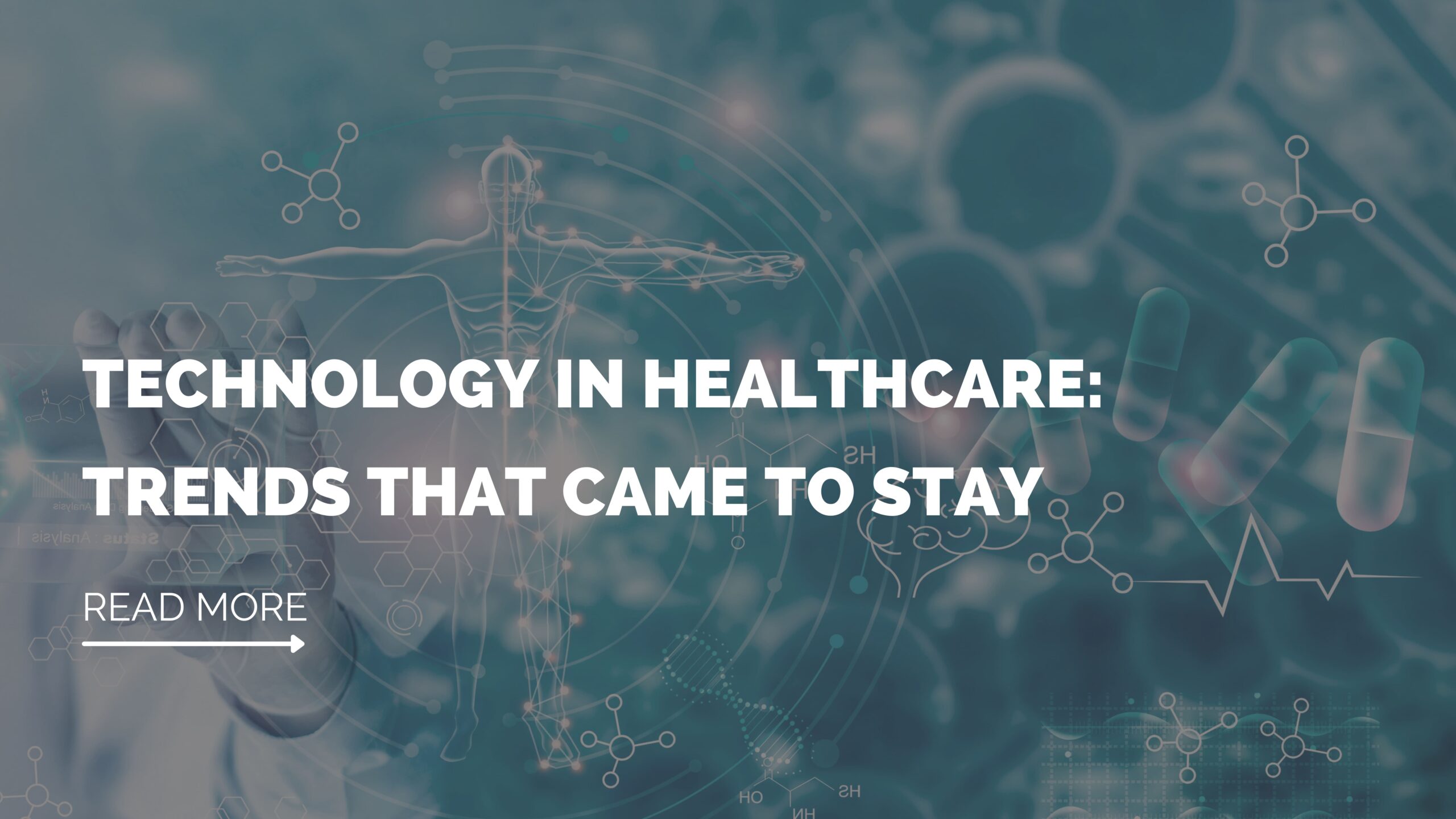Technologies have been transforming the healthcare industry over the past years through numerous advancements in disease detection, treatment, and prevention. Simply, this couldn’t have occurred without the rapid development of AI-driven technology and the digitization of healthcare workflows in response to more harsh global conditions and the increased need for affordable and high-quality medical treatment.
It’s crucial to keep an eye on the trends influencing healthcare technology in 2023 as we move forward. Modern hospitals and care facilities rely heavily on legacy infrastructure and software, but it’s necessary to think about how those systems might be integrated with newer technology or eventually replaced by more dependable ones. Performance, productivity, efficiency, and security improvements should be prioritized without compromising dependability or accessibility.
Let’s take a look at the most significant technologies that can revolutionize businesses pushing the healthcare industry toward digital transformation this year:
Healthtech Trends for 2023
1. AI in Healthcare
Artificial intelligence has gained a lot of attention as a practical technology in 2022 across several industries, particularly in healthcare.
AI Cancer Diagnostics
For many years, a biopsy was the only effective way to diagnose malignant illnesses. This does not, however, give a complete image of the organ tissue. Digital scans of a particular region that may be impacted by cell mutations are a key component of contemporary histopathology techniques. The use of whole slide images (WSI) at once allows pathologists to investigate far bigger areas of human organisms.
The enormous resolution of the image makes using WSI seem difficult. Even though WSI scans are very enlightening, they need hours of meticulous zooming in and out and scrolling from region to area before inspection findings can be seen. As a result, AI programs that process WSI using convolutional neural networks and computer vision have begun to appear.
AI in Drug Development and Diagnosis
There are several uses for artificial intelligence that go beyond pandemic treatment and response. AI hugely impacts how quickly information is processed and decisions are made. Furthermore, machine learning has a huge impact on the healthcare sector’s ability to generate new medications and improve the effectiveness of diagnostic procedures.
Data is Key in AI for Healthcare
Data is the key component driving artificial intelligence’s success in the healthcare industry, particularly training data. Moreover, the caliber of the training dataset determines how well machine learning software performs. The model will function better with the better quality and range of data each provider offers. Your AI team must consist of skilled software developers and data scientists who can collaborate to deliver the best outcomes.
Are you in need of skilled software engineering talent? Contact us, we build your A+ team of experts.
2. Extended Reality in Medical Environments
The healthcare industry offers a lot of promise for extended reality, a broad phrase that encompasses augmented reality (AR), virtual reality (VR), and mixed reality (MR). AR and VR technology have the potential to significantly advance the health tech sector, from telehealth applications to assisting in surgery.
AR and MR in healthcare
Multiple healthcare settings benefit from augmented reality and mixed reality. The use of mixed reality headsets by surgeons, such as the Microsoft Hololens 2, is one of this technology’s most well-liked and practical applications. While using both hands during the procedure, the surgeon can receive heads-up information from the headset.
This advanced knowledge not only enhances these operations but it also becomes a cooperative, distant effort and aid in training. Other doctors are able to watch the procedure through the head-mounted camera view of the headset and provide guidance.
Metaverse: Hype or the Future?
There is a heated argument about whether Facebook’s switch to Meta and emphasis on shared virtual reality experiences is appropriate. It is ultimately up to you whether or not you are willing to invest in this. Virtual reality in healthcare contexts has considerable promise, even if the metaverse is greatly exaggerated.
3. The Development of Remote Care and Telemedicine
Since the start of the pandemic in 2020, telehealth has advanced significantly. By 2023, medical professionals frequently consult with patients through video conferences to address their issues and offer guidance. This is now supported by much better infrastructure. By 2026, telehealth is anticipated to reach a value of $185.6 billion. What does the future hold in light of that?
Compliance with Regulations
One of the most crucial concerns with telemedicine is HIPAA compliance before we even think about that possibility. It’s critical for healthcare professionals to think carefully about the applications they are using to connect with their patients, even though some limitations were relaxed during the pandemic’s peak in 2020. Are they accredited to handle confidential health information and secure it?
Data Storage and Cloud Hosting
Although most cloud storage systems are quite safe, they may not always adhere to government requirements regarding protected health information. Maintaining functionality and efficiency for any healthcare organization requiring electronic health records requires HIPAA-compliant cloud hosting solutions (EVR).
However, there are other features that are advantageous for your company besides teleconferencing and data hosting. Other potential helpful elements include security, location services, appointment management, secure messaging, healthcare provider evaluations, visit history and wearable connectivity.
4. Wearables and IoMT
The potential of wearables and Internet of Things (IoT) technology in the healthcare sector has considerably increased. Many now refer to this microprocessing trend as the “Internet of Medical Things” for use in telemedicine and telehealth applications.
At the beginning of 2021, 11.3 billion IoT devices were online. The market for IoT medical devices is anticipated to grow from USD 26.5 billion in 2021 to USD 94.2 billion by 2026. IoMT cannot be disregarded as the healthcare sector becomes more interconnected thanks to these technologies.
Wanna know more about the IoMT implications and market? Visit Advances in IoMT 2022.
Healthcare technology will continue to advance in all areas as 2023 approaches. Despite industry-wide security improvements, threats are always changing and must be dealt with through prevention rather than reaction. Because of ground-breaking and developing technologies like artificial intelligence, machine learning, and extended reality, the quality and effectiveness of healthcare will keep improving.
Time and money are both at stake when selecting how to update your healthcare company. It’s crucial that you work with the best group of software developers who are aware of your requirements and goals.
Reach out to begin a dialogue and then develop a plan of action!
About ITJ
ITJ is devoted to serving fast-growing and high-value market sectors, particularly the Internet of Medical Things (IoMT), working with innovative medical device companies looking to improve people’s lives. With a unique BOT (build, operate, and transfer) model that sources only the best digital talent available, ITJ enables companies in the US to create technology centers of excellence in Mexico. For more information, visit www.itj.com.


